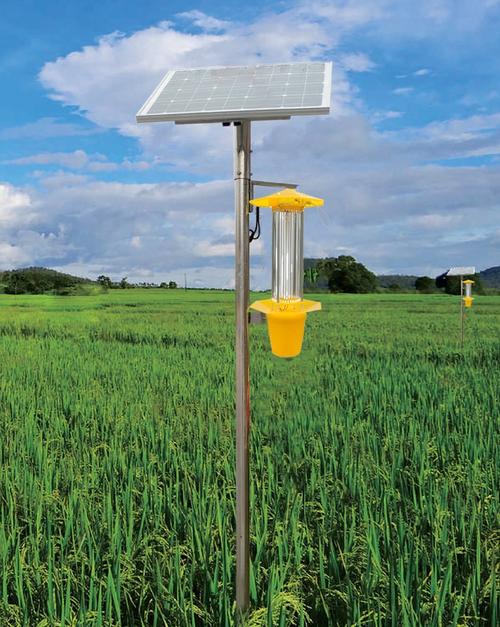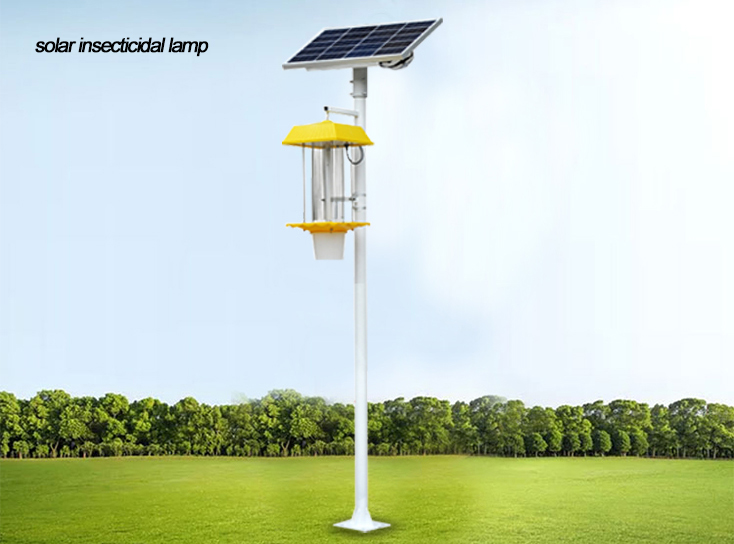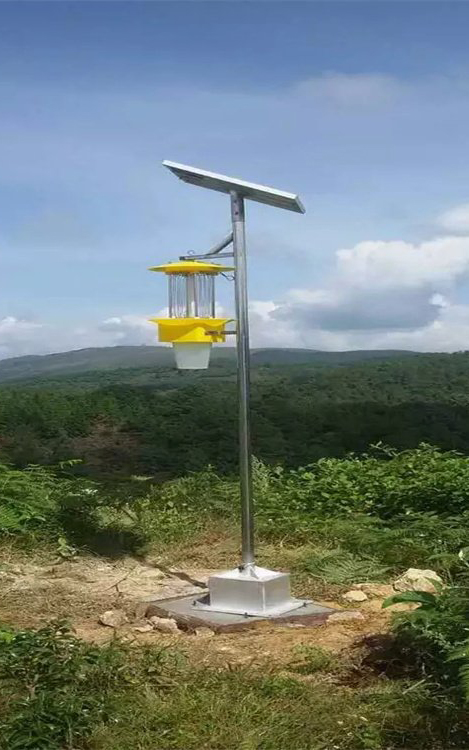

— Blogs —
—Products—
 Consumer hotline +8618073152920
Consumer hotline +8618073152920 WhatsApp:+8615367865107
Address:Room 102, District D, Houhu Industrial Park, Yuelu District, Changsha City, Hunan Province, China
Product knowledge
Time:2025-10-08 16:22:35 Popularity:493
The global shift in farming practices favors lower chemical residue, greater product traceability, and superior cost efficiency. The traditional model of calendar-based spraying is obsolete. A solar-powered insect light trap provides a continuous, passive, and highly efficient pest management solution that aligns perfectly with the demands of precision agriculture.1 It is an indispensable tool for achieving a sustainable and profitable harvest.
The effectiveness of the solar insect trap for agriculture lies in its ability to target the specific adult stages of numerous destructive pests:
| Crop Category | Primary Target Pests | Why Trapping Works |
| Rice & Cereals | Stem Borers, Leaf Folders, Rice Moths | Trapping adult moths disrupts the breeding cycle before egg-laying. |
| Vegetables & Fruits | Whiteflies, Thrips, Aphids, Various Moths | Reduces population pressure on high-value, sensitive crops. |
| Orchards & Vineyards | Codling Moths, Grape Berry Moths, Leafrollers | Critical for reducing the number of pests that cause direct damage to fruit. |
| Greenhouses/Polytunnels | Whiteflies, Fungus Gnats, Beetles | Provides a chemical-free, contained control method. |

Successful implementation requires more than just placing traps—it requires a tactical approach.
Identify Dominant Species: Use existing records or preliminary pheromone traps to confirm the primary pest species you need to target. This confirms you select the correct light spectrum.
Initial Density: Start with a baseline deployment of 1–2 traps per hectare (ha). Adjust density based on field history, increasing placement in known "hotspots" or near borders.
Height: Place the light source 1.0–1.5 meters above the crop canopy to effectively intercept flying adults.
Zoning: Strategically place traps along field edges (where infestations often begin) and throughout the interior to provide comprehensive coverage.
Weekly Counts: Conduct weekly manual trap counts during the first month to establish a local baseline and understand natural population fluctuations.
Action Thresholds: Integrate trap counts directly into your spray decision flow. Only initiate a spray application when the pest count exceeds a pre-defined Action Threshold. This directly optimizes the solar insect trap uses for true economic benefit.

The greatest value of modern solar traps lies in data. Combining the solar-powered insect light trap with other farm sensors creates a robust, multi-factor decision engine:
| Data Source | Information Provided | Decision Impact |
| Solar Trap (Pest Count) | Real-time population pressure. | Primary trigger for potential action. |
| Soil/Meteorological Sensors | Moisture, temperature, wind, rainfall. | Identifies optimal conditions for pest flight, egg hatch, and spray effectiveness. |
| Integrated Decision Engine | Only spray when high pest pressure + favorable weather align. This drastically reduces the disadvantages of solar insect trap simple "count and spray" models. |
Project: Mongolia Export Project (Pilot Program)
Challenge: High chemical use was preventing rice from meeting stringent international export residue standards. High solar insect trap price was a perceived barrier.
Solution: Deployed NiuBoL traps integrated with local weather stations across the project area.
Outcome: The pilot resulted in a 60% reduction in chemical sprays due to data-driven application timing. The resulting lower residue levels significantly improved the acceptance rate for export-grade rice, easily recovering the initial trap investment.
To ensure a long service life and maximum return on investment (ROI), consistent maintenance is key:
| Component | Maintenance Cycle | Action |
| Trap Mechanism | Weekly (during peak season) | Clean grids or replace sticky plates to maintain maximum capture rate. |
| Solar Panels | Monthly | Keep the panel clear of dust, bird droppings, and vegetation to optimize charging. |
| Battery Unit | Every 3–5 years | Plan for battery replacement to maintain autonomy and reliability, factored into the TCO. |

Q: How many solar insect traps per hectare should I use for maximum effect?
A: We recommend starting with a low-density baseline of 1–3 traps/ha for monitoring purposes. If historical data or the first season's catch reveals specific hotspots, increase the density up to 5–10/ha for localized mass trapping.
Q: Is the initial solar insect trap price justified by the savings?
A: Absolutely. While the initial solar insect trap price may be higher than simple manual traps, the documented savings on labor, chemical costs, and crop loss typically result in a payback period of one to two seasons, transforming it from a cost into an asset.
NiuBoL specializes in designing complete solar insect trap for agriculture solutions—offering rugged hardware combined with powerful analytics subscriptions. Let us build your custom IPM solution.
Contact us today for a pilot program or bulk pricing options: sales@niubol.com
Related recommendations
Sensors & Weather Stations Catalog
Agriculture Sensors and Weather Stations Catalog-NiuBoL.pdf
Weather Stations Catalog-NiuBoL.pdf
Related products
 Combined air temperature and relative humidity sensor
Combined air temperature and relative humidity sensor Soil Moisture Temperature sensor for irrigation
Soil Moisture Temperature sensor for irrigation Soil pH sensor RS485 soil Testing instrument soil ph meter for agriculture
Soil pH sensor RS485 soil Testing instrument soil ph meter for agriculture Wind Speed sensor Output Modbus/RS485/Analog/0-5V/4-20mA
Wind Speed sensor Output Modbus/RS485/Analog/0-5V/4-20mA Tipping bucket rain gauge for weather monitoring auto rainfall sensor RS485/Outdoor/stainless steel
Tipping bucket rain gauge for weather monitoring auto rainfall sensor RS485/Outdoor/stainless steel Pyranometer Solar Radiation Sensor 4-20mA/RS485
Pyranometer Solar Radiation Sensor 4-20mA/RS485
Screenshot, WhatsApp to identify the QR code
WhatsApp number:+8615367865107
(Click on WhatsApp to copy and add friends)
